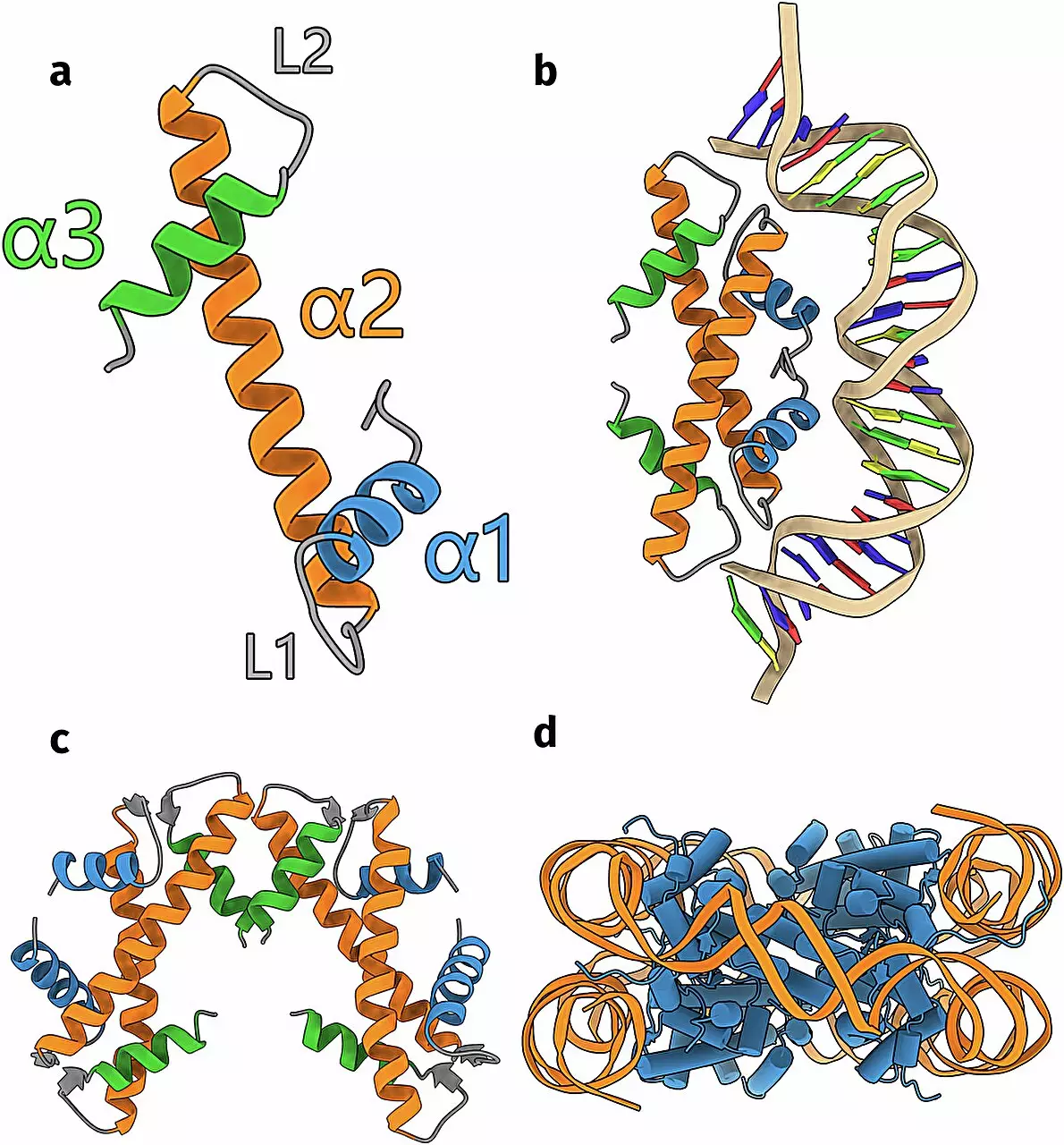The field of genetics has long been dominated by the understanding that organisms such as plants and animals utilize histones to pack their DNA efficiently within nuclei. However, groundbreaking research from the Leiden Institute of Chemistry has unearthed a startling truth: single-celled organisms, including bacteria and archaea, also possess these essential proteins, and their histones are significantly more diverse than previously recognized. This discovery, led by Leiden Ph.D. candidate Samuel Schwab, represents an exciting shift in our understanding of genetic material organization in simpler life forms.
Histones are proteins crucial for the structural organization of DNA, facilitating its compaction to fit within cellular confines. Traditional wisdom held that only complex organisms required histones; that assumption was overturned when scientists began discovering these proteins in single-celled organisms lacking a defined nucleus. Histones form nucleosomes—structures comprised of DNA wrapped around protein cores—thereby playing a pivotal role in DNA management. As Schwab notes, DNA alone is an unwieldy molecule, making it indispensable for cells to utilize proteins to ensure effective packaging and accessibility.
The research conducted by Schwab and his colleagues highlights an exhilarating revelation about the histones present in bacteria and archaea. Their work demonstrates the presence of the 17 distinct groups of histones, each demonstrating unique structures and functionalities. This finding not only deepens our understanding of prokaryotic life forms but also opens new avenues of inquiry regarding the evolution and functional diversity of histones themselves.
To investigate the diverse histones in single-celled organisms, the research team employed a futuristic approach involving artificial intelligence. Specifically, they utilized AlphaFold, a cutting-edge AI algorithm known for predicting protein structures based on genetic sequences. Schwab was able to collect a comprehensive database, amassing over 6,000 DNA sequences thought to correspond with undiscovered histones. Leveraging state-of-the-art computational resources, the researchers successfully predicted the structures of these proteins, a feat previously deemed extraordinarily challenging.
The accuracy of these AI predictions was subsequently verified through empirical lab experiments. Schwab recounts the team’s success in confirming the structure of one newly identified histone group, finding it matched the theoretical model nearly perfectly. This outcome not only validates the reliability of AI in scientific endeavors but also illuminates the potential of technology-driven methodologies in biological research.
The implications of this discovery extend far beyond merely cataloging histone types. Analyzing the predicted structures has enabled researchers to formulate hypotheses regarding the distinct roles these proteins may play in the organization and regulation of genetic material. It was revealed that the histones serve a variety of functions ranging from traditional DNA wrapping to more complex interactions that facilitate DNA folding and create loops within strands. Interestingly, some histones were found to associate with cellular membranes rather than binding directly to DNA—a groundbreaking insight into their multifunctional capabilities.
Supervisor Remus Dame emphasizes the significance of these findings, asserting that they advance our comprehension of not only DNA organization but also the evolutionary processes shaping how diverse organisms manage their genetic resources. As researchers continue to investigate these histones, they anticipate a greater understanding of cellular dynamics and the significant roles proteins play within the cellular landscape.
The research spearheaded by Schwab and Dame underscores a critical truth: our knowledge of single-celled organisms and their genetic apparatuses remains underdeveloped. Despite the wealth of information acquired, Schwab urges caution, noting that the intricate roles of histones and their variations are yet to be fully uncovered. Continued studies hold the promise of unveiling further complexities in DNA organization, thereby enriching our comprehension of not only microbiology but the evolutionary narratives of all life forms.
This pioneering research illuminates the rich tapestry of life at the cellular level, prompting a reevaluation of our understanding of histones. As we delve deeper into the microscopic realms of single-celled organisms, the chapters of genetic history are eagerly waiting to be discovered—an exciting prospect for future scientific inquiry.


Leave a Reply